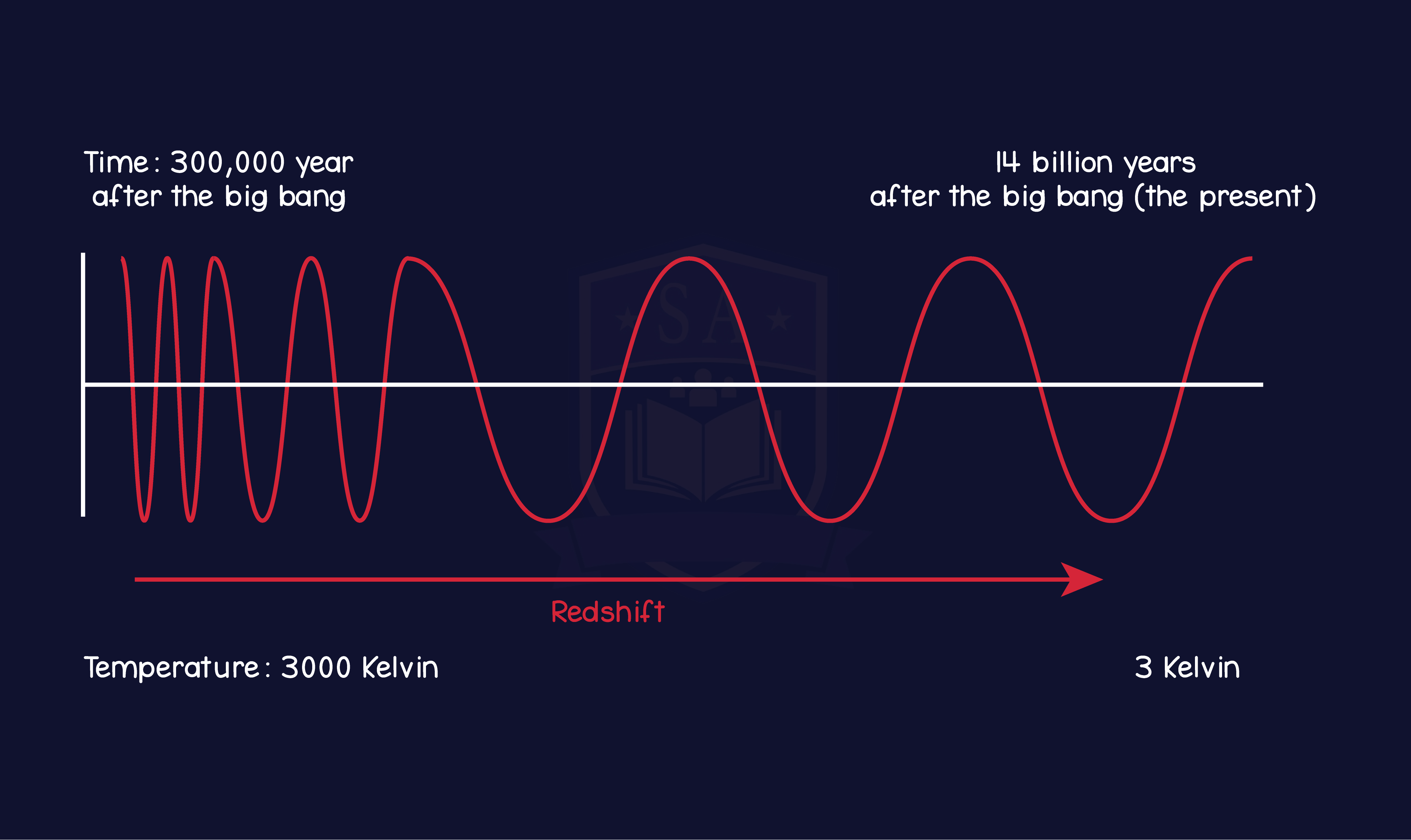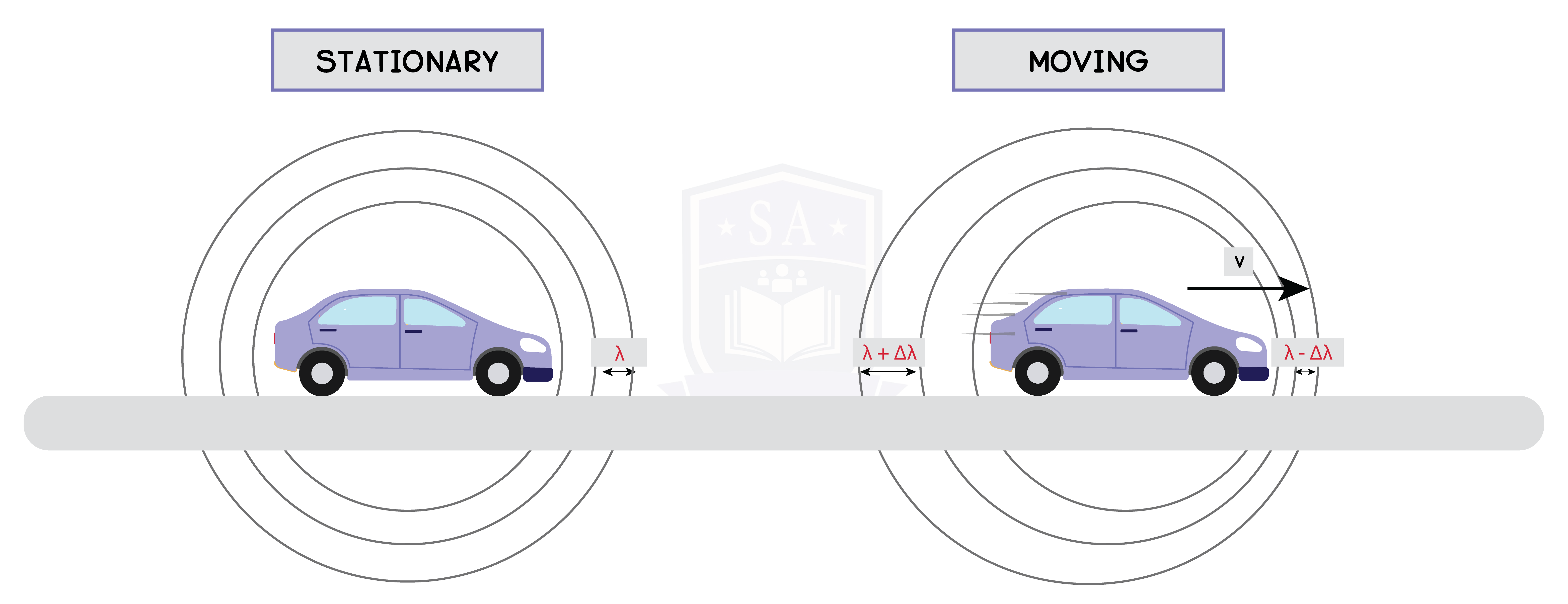REVISION NOTES
IGCSE Edexcel Physics
a
8.3 Cosmology
8.3.1P Describe the past evolution of the universe and the main arguments in favour of the Big Bang theory

8.3.2P Describe evidence that supports the Big Bang theory (red-shift and cosmic microwave background – CMB – radiation)

8.3.3P Describe that if a wave source is moving relative to an observer, there will be a change in the observed frequency and wavelength
- If a source emitting waves is moving away from a stationary observer, the wavelengths will appear to be larger due to the distance travelled by the source being added from the original wavelength
- This is known as redshift
- Due to the apparent increase in wavelength, frequency will also appear to be lower than its actual value
- If a source emitting waves is moving towards a stationary observer, the wavelengths will appear to be shorter due to the distance travelled by the source being removed from the original wavelength
- This is known as blueshift
- Due to the apparent decrease in wavelength, frequency will also appear to be higher than its actual value
8.3.4P Use the equation relating to change in wavelength, reference wavelength, velocity of a galaxy and the speed of light:


8.3.5P Describe the red-shift in light received from galaxies at different distances away from the Earth


8.3.6P Explain why the red-shift of galaxies provides evidence for the expansion of the universe



